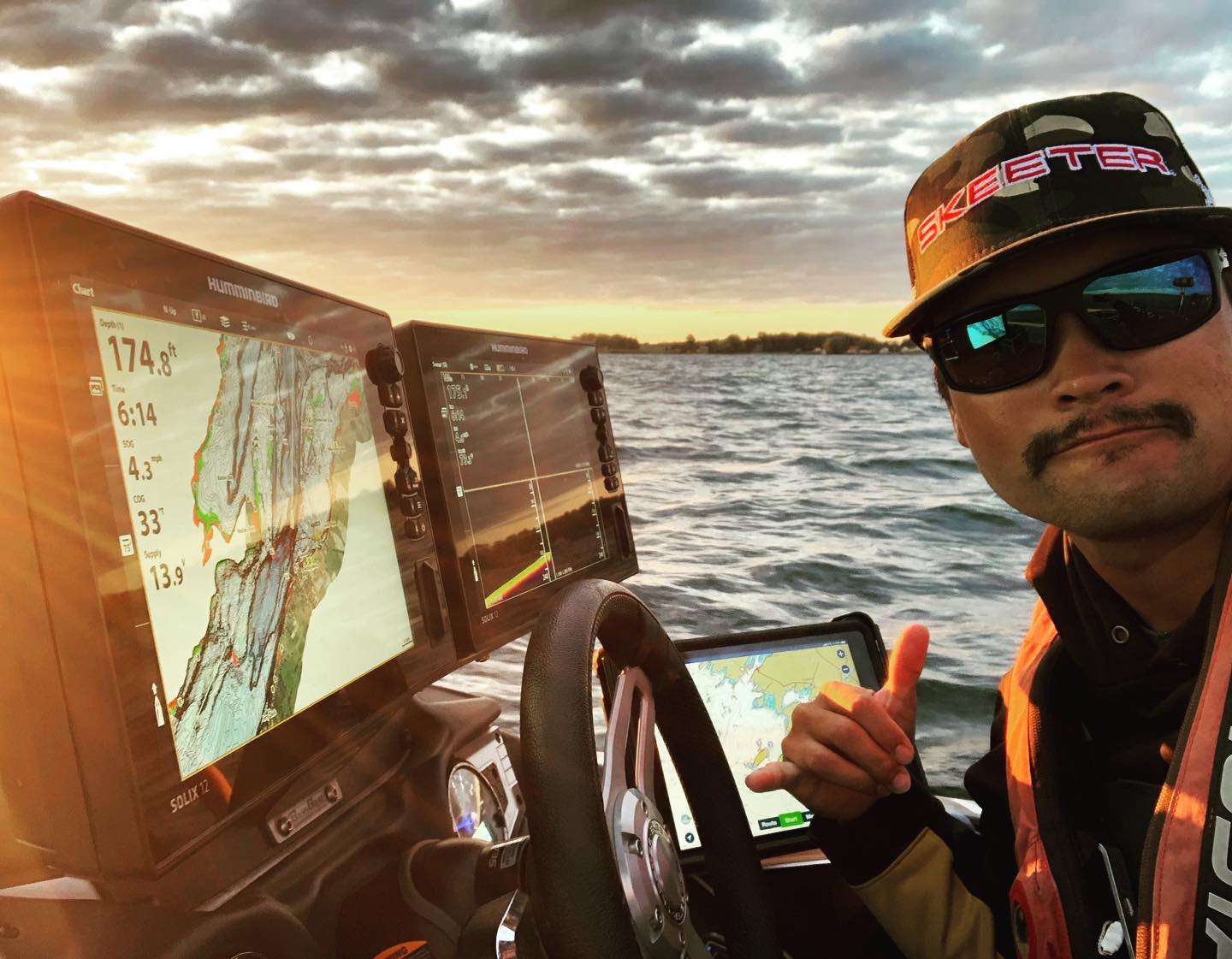
Once I’ve made my line selection it’s time for me to pick a bait. It’s popular to pick ones that look like a goby. After all, that’s pretty much what they eat.
Editor’s note: Read part 1.
I don’t disagree with that but there are other styles that’ll work just as well. One of my favorites is a short, thin flat tail worm. It looks close enough to a goby to be effective, and it looks totally natural when fished just off the bottom on thin line.
As far as hooks and weights are concerned I’d have to say that everybody has a favorite. Most of them seem to work. Two things about hooks: Make sure they’re designed for drop shotting and that they’re sharp. You can’t afford to miss bites because of a second-class hook.
And, use as little weight as possible. The more weight you use the less natural your presentation will look.
How far above the bottom I let my bait suspend is more art than science. I try different distances until I figure out what the bass are doing the day and the hour I’m fishing. If the bite drops off along the way, I change. I have no strategy beyond that.
When I tie my drop-shot rig I always make sure the knot is as small as possible, and I always trim the tag end of the line right up close to the knot. Smallies will see a long tag line. It won’t look right to them and so they’ll shy away. This may seem like a small thing but it’s important. I learned about it the hard way.
I also make sure my SONAR is adjusted properly, and I always keep one eye on it. Smallmouth in northern waters like to hold alongside isolated boulders. They’re hard to see but when you do see one it’ll be fairly easy to catch if you’re rigged properly and if you drop your bait right in front of it. Smallmouth might be wary, but they’re also aggressive.
Always keep in mind is that fish don’t always show up on your screen as an arch. I know you hear about that proverbial “arch” all the time but that only happens when conditions are perfect. It’s much more common to see a line or even a smudge. Experience is the best teacher here.
Another thing I do is keep a close eye on what the SONAR tells me is happening on the shady side of my boat. Smallmouth like to suspend there. Keep a rod and reel handy for that scenario. It might pay you huge dividends.
At the beginning of part 1 I said you should fish for smallmouth in the same waters or general areas that the Bassmaster Elite Series visits, our Northern Swing as it’s called. The reasons for that are simple and straightforward. The fish are big and although they don’t jump in the boat they are catchable if you keep in mind that details matter.
It might be frustrating to take the extra time to do some of the things I’ve talked about in these two columns but it’s the only way I know to consistently catch them. Believe me, if I knew how to catch them without that investment of time and energy I’d do it. I’d tell you how to do it, too.





